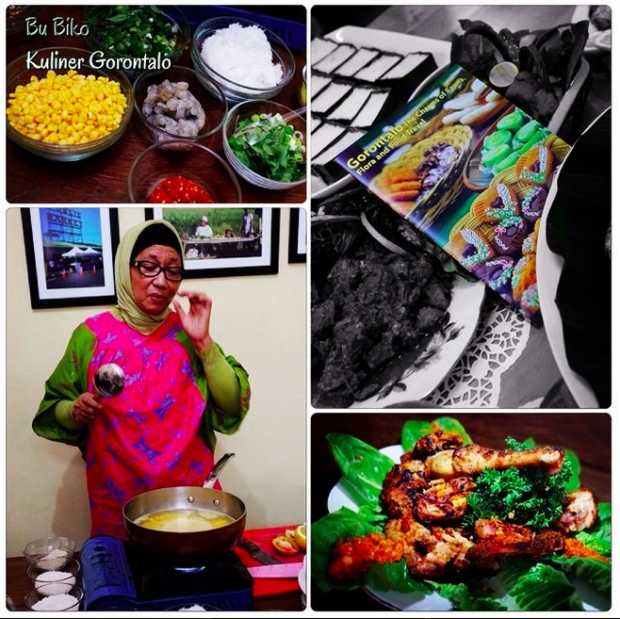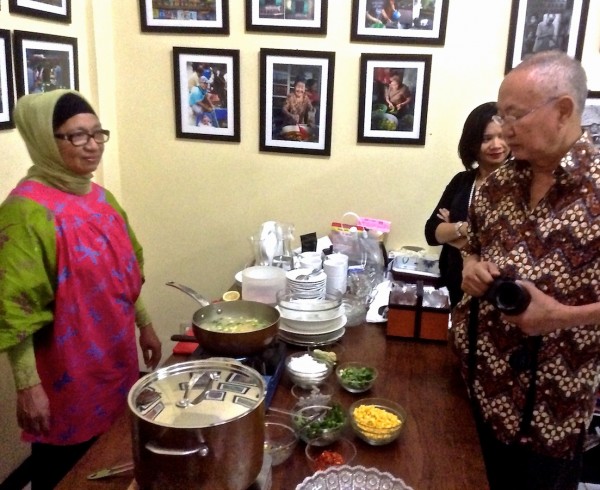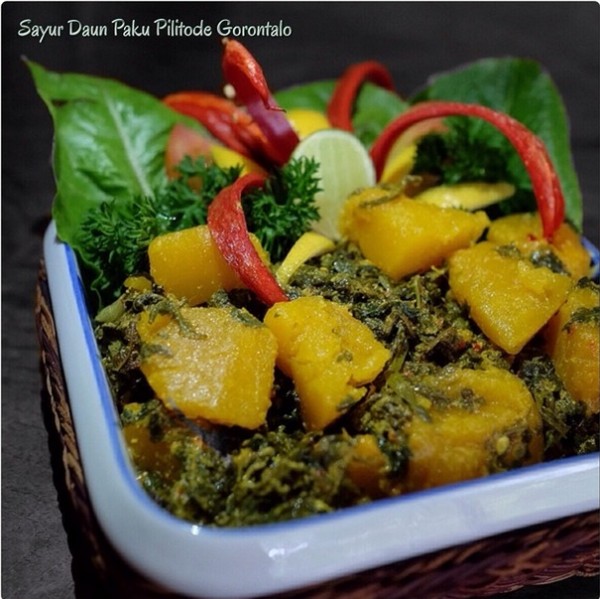Not a member yet? Sign Up!
Info
Please use real email address to activate your registration

William Wongso, Indonesia’s foremost culinary connoisseur, restaurateur, critique and corporate consultant, is the defender of taste authenticity.
He has been active in the culinary world more than 30 years. "William’s calling is to protect the authenticity of Indonesian flavors and culinary names," Intisari magazine writes. Eventually, he believes, the archipelago’s culinary heritage will prevail internationally.
Gorontalo food tasting
William’s enthusiasm inevitably infected everyone during a Gorontalo Food Tasting at his office, arranged by Life is Sweet and Omar Niode Foundation.
William Wongso’s office at Jalan Melawai, Jakarta has become a hangout for food communities and its walls are witness to interaction between foodies and chefs with Om Will (uncle William) during many events, counting ACMI Potlucks.

Omar Niode Foundation hopes to collaborate with Life is Sweet and Om Will for Pop-Up Dining event, featuring Gorontalo Cuisine. Life is Sweet is an event planner that organizes various culinary program with a mission to deliver Indonesia’s rich and vastly diverse heritage to the world stage, through carefully tailored programs that fit in with current lifestyle and market trends.
To prepare for a pop-up dining presenting culinary heritage, the renowned chef has to taste the range of Gorontalo foods first, and provide suggestion on how to enhance the cooking and the plating while maintaining its authenticity.
On short notice, Biko Mointi Boekoesoe, owner of Talaga Cookery meticulously prepared Gorontalo dishes ranging from soup and a selection of main courses to vegetables and desserts.
Among others present at the Gorontalo Food Tasting were Life is Sweet founders: Rubiana Fajar, Lita Hamzah and Michael Soetantyo and international banquet expert Sri Murwati. William Wongso also has his team nearby, including Erna Setyowati, General Affairs Manager of William Wongso Kuliner and chefs Putri Rizky Mumpuni and Suherman Ade.
Illuminating the menu
The menu for the day was similar to the one at Jamie Oliver's Food Revolution Day 2014, organized by Omar Niode Foundation and The Cook Shop.
At the Gorontalo food tasting, however, we had the privilege of enjoying the food with Om Will who asked questions and commented the cooking methods and the ingredients for each dish.
Before we devoured the food, Om Will spent quite some time styling the dish, finding natural light, trying several angles, zooming in and snapping pictures with his camera.

He shuns fancy food styling and prefers natural appearance so that people know what the food is.
To keep authenticity, Om Will's advise is to use local ingredients. Palm sugar, coconut cooking oil, red eye chili, and specific herbs and spices have to be transported from Gorontalo
With Om Will’s permission we uploaded his shots and comments for this blog post.
Soup
Binthe biluhuta - Corn soup with grated coconut, basil leaves and tuna fish.
Use traditional coconut grater from Gorontalo to get original texture. Boil the corn in low heat, and add Oriental white clam or lobster to increase value without sacrificing its authenticity.

Main course
Bilenthango - Fish split, cooked on one side, spiced with red eye chili, shallot, garlic and tomato on top.
Use red eye chili grown in Gorontalo and coconut oil from the area to get an authentic taste.

Ayam Iloni - Grilled spicy chicken with coconut milk and 10 types of herbs and spices.
Cook over low heat to perfectly marinate the chicken chicken. Grill with strong burning charcoal fire for a while only to avoid dryness and overcooking.

Sate Balanga - Marinated satay cooked in a frying pan.
Sate is actually a dish with grilled meat in skewers. Sate Balanga (nor grilled neither skewered) should be cooked on low heat so that the meat does not shrink and we get a savory taste of the broth.

Kua Bugis - Meat in black soup with 15 types of herbs and spices
In passing, Kua Bugis looks like like rawon (Javanese beef black soup). It is mixed with roasted grated coconut rather than kluwek (Pangium edule) as in rawon. The perfect cut for this dish is beef shank.

Vegetables
Ihu tilinanga - Fried eggplant with sauce made of coconut milk, turmeric, ginger, lemon grass, galangal, shallot, garlic and red eye chili.
Fry the seasoning and the eggplant with coconut oil to keep its authenticity. In plating do not soak the eggplant with the sauce so we know what the dish is.

Pilitode lo paku - Vegetable fern and pumpkin in coconut milk with turmeric
Pumpkin is a perfect combination for this dish. It will taste better with anchovies or salted fish.

Desserts
TobuU - A mix of coconut milk, flour, young coconut, walnut and palm sugar, placed in boat shaped banana leaf and steamed.
TobuU is like talam (a coconut milk cake) with its soft texture and is perfect for dessert. Following its original ingredients, avoid condensed milk and use fresh coconut milk and rice flour instead.

Omu - Young coconut iced drink with palm sugar
This type of drink is common in several regions of Southeast Asia. Omu, however has palm sugar specifically made in Gorontalo.
Culinary Diplomacy
During lunch, the chefs in Om Will’s team asked detailed questions about the ingredients for the day’s spread to Biko Mointi Boekoesoe who was very grateful to learn all kinds of cooking methods that she will apply immediately.
The most important thing, says Om Will who travels the world for culinary diplomacy, is not to forget the origin of the food. “Yes,” he said, “one dish may exist in several areas of the country, but you have to mention where they come from.”

-----------------------------
Images: William Wongso, Omar Niode Foundation